
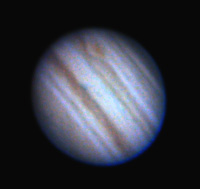
(All images taken at Cherry Springs State Park, PA on 10/31/00)


The following is an update to the discussions and images in PART 1 and PART 2 concerning use of the Olympus C2020Z digital camera for deep sky imaging. On October 31st I did more imaging with the C2020Z camera on my 20" Starmaster with GOTO Skytracker. The sky was free of Moonlight as opposed to images taken on October 20 with the last quarter Moon as shown in Part 2. I also took all images with the LCD display turned off which greatly reduced dark frame noise. More nebulosity was acquired in these new Orion images. The ambient temperature was below 30 degrees Fahrenheit which also cooled the camera's CCD to allow no noise in the dark frames of the 16 second exposures. There were just a few hot pixels noticed. If the camera's menu (software) would allow for longer exposures, say even one minute, I believe that the dark frames would still have an acceptable noise level at low ambient temperatures. Here is a dark frame comparison:
The above dark frames are 300X300 pixel crops of the 1600X1200 pixel dark frame images with the LCD display off.
The following images were taken using a 36mm silvertop plossel without the f/5 telecompressor:
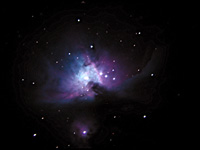 M42
- Four 16 sec. exposures
M42
- Four 16 sec. exposures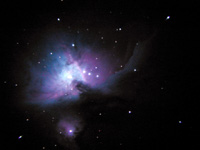 M42
- One 16 sec. exposures
M42
- One 16 sec. exposures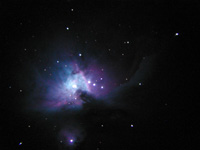 M42 - One 16
sec. exposure
M42 - One 16
sec. exposure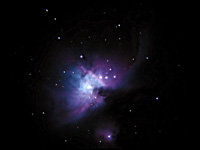 M42
- Three 16 sec. exposures
M42
- Three 16 sec. exposures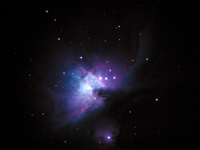 M42 -
One 16 sec. exposure
M42 -
One 16 sec. exposureDeep sky notes: I am expecting improved images with use of the f/5 telecompressor and will try this for the next imaging session.
Images of Jupiter taken on 10/31/00 - Seeing was not steady:
TO PART 1 - DEEP SKY IMAGING WITH 2X BARLOW
TO PART 2 - DEEP SKY IMAGING ON 10/20/00
TO PART 4 - DEEP SKY IMAGING - LONG EXPOSURES
TO PART 5 - DEEP SKY IMAGING - 32 SECOND EXPOSURES - C2000Z
TO PART 6 - DISASSEMBLY OF C2000Z
TO PART 8 - AIR COOLED C2000Z LATEST IMAGES
 For images taken with
the C2020Z and a Collins I3 Image Intensifier Eyepiece Click Here
For images taken with
the C2020Z and a Collins I3 Image Intensifier Eyepiece Click Here
TO MY DIGITAL CAMERA IMAGING HOME PAGE
TO MY MAIN ASTROPHOTOGRAPHY PAGE